
LP: I found this series of illustrations you did for a story called "Here Come the Brides" by Geraldine Napier...
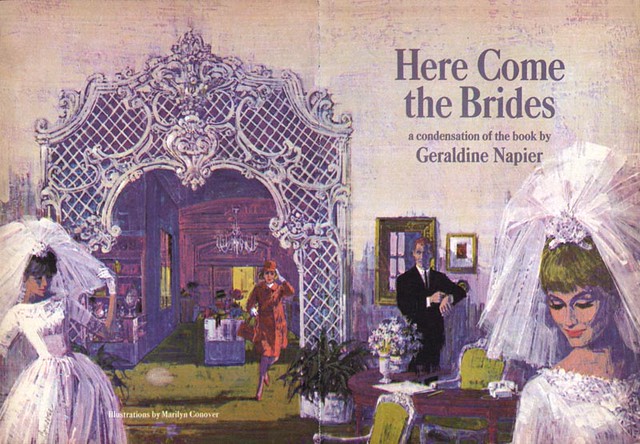
MC: Oh God, that's early stuff. That was in... '61 or '62... I was in Westport CT when I did those and working for some goofy studio in Boston, I think. I went on to be represented in New York and did my best stuff... Time covers and illustrations for magazines... and then I went on to portraits from there.
LP: Well I'd love to know more about that - about your whole career, in fact.
MC: Well, I used to do all the beautiful girls standing by televisions and new refrigerators and all that. The magazines were crammed with gorgeous illustrations back then.
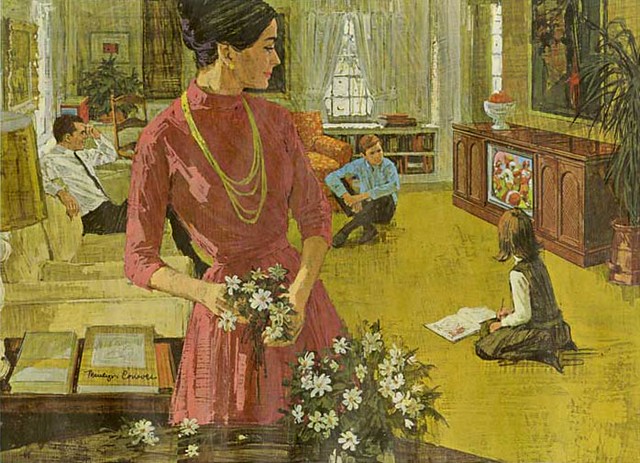
LP: Yeah, I just love all the stuff you find in the magazines back then; Al Parker, Al Dorne... all the guys from the Famous Artists School...
MC: That Famous Artists School was a piece of crap. I mean those fellows didn't do the correcting [of student assignments].

It was right there in Westport, a few blocks away from me, and the only artists who did any of the correcting were guys who couldn't make it in the real illustration business anymore. And they were never allowed to handle the same person - the same student - more than once.
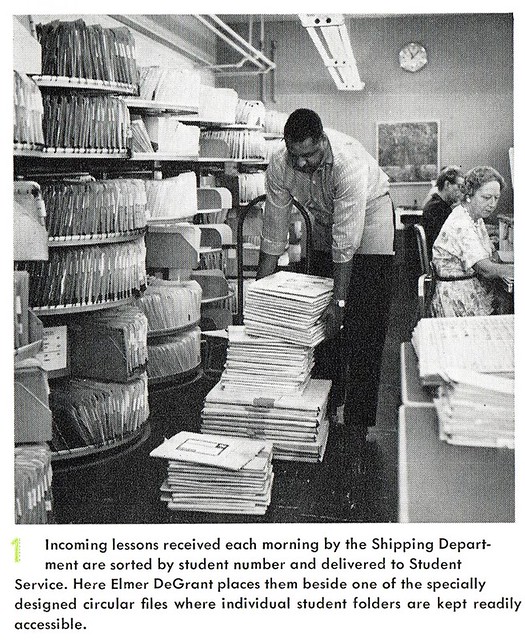
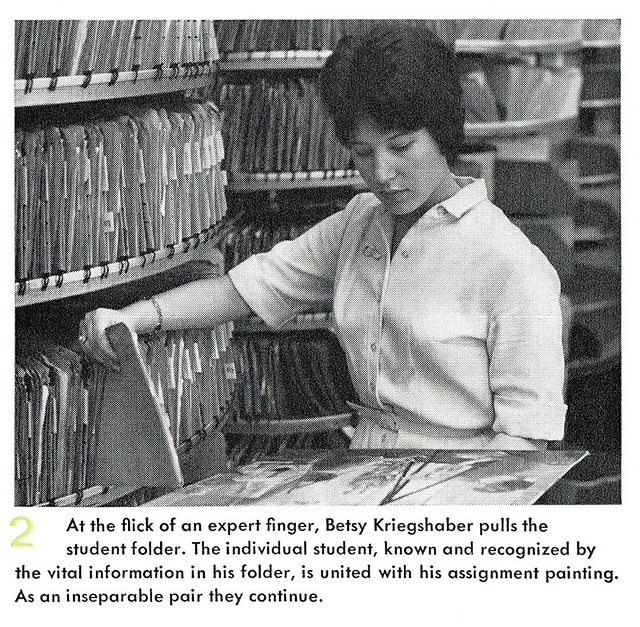
MC: It was started when a bunch of those gorgeous guys got smashed at a party and thought it'd be a great idea - and it was! - and they made money forever, I mean ten or twenty years. When I used to go get the train to New York I used to go by the plant every day but, I mean, that was just a sham to get money out of little people in Dubuque and everywhere else.
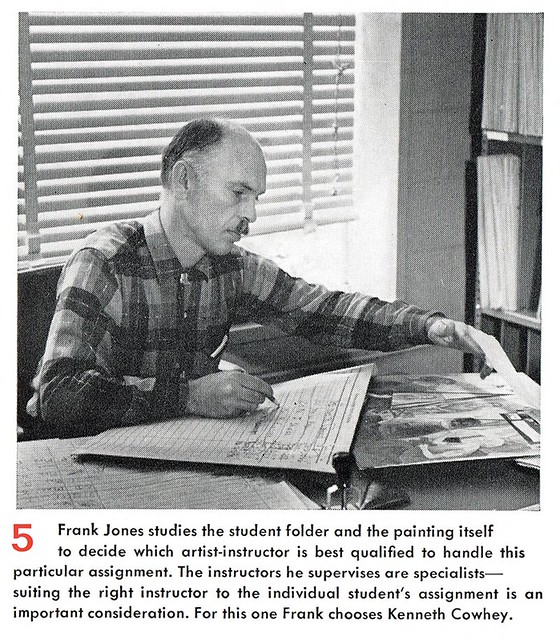
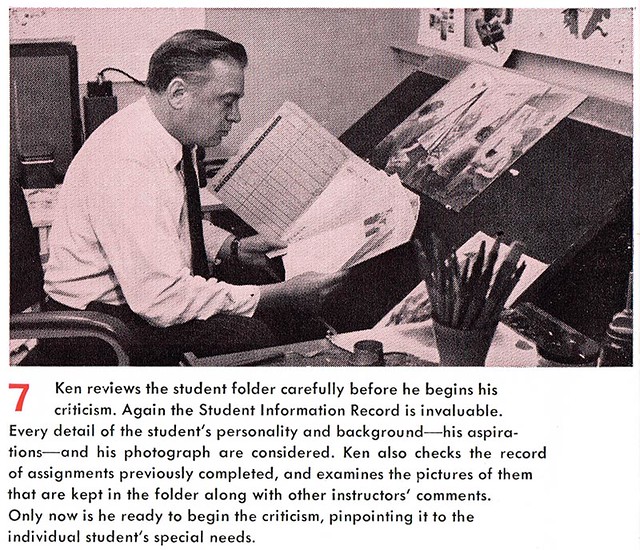
MC: I mean if I was an artist working there and I wanted to follow up with you and you wanted to follow up and ask me questions; if you wanted to contact a real artist, you couldn't do that because they didn't want you to develop a relationship with a real artist because that would circumvent the slobs that were running the thing. I mean I can't tell you how much I wouldn't use that 'school' as a beacon of any sort. And those guys in the beginning, I mean they invested in it and that was that.
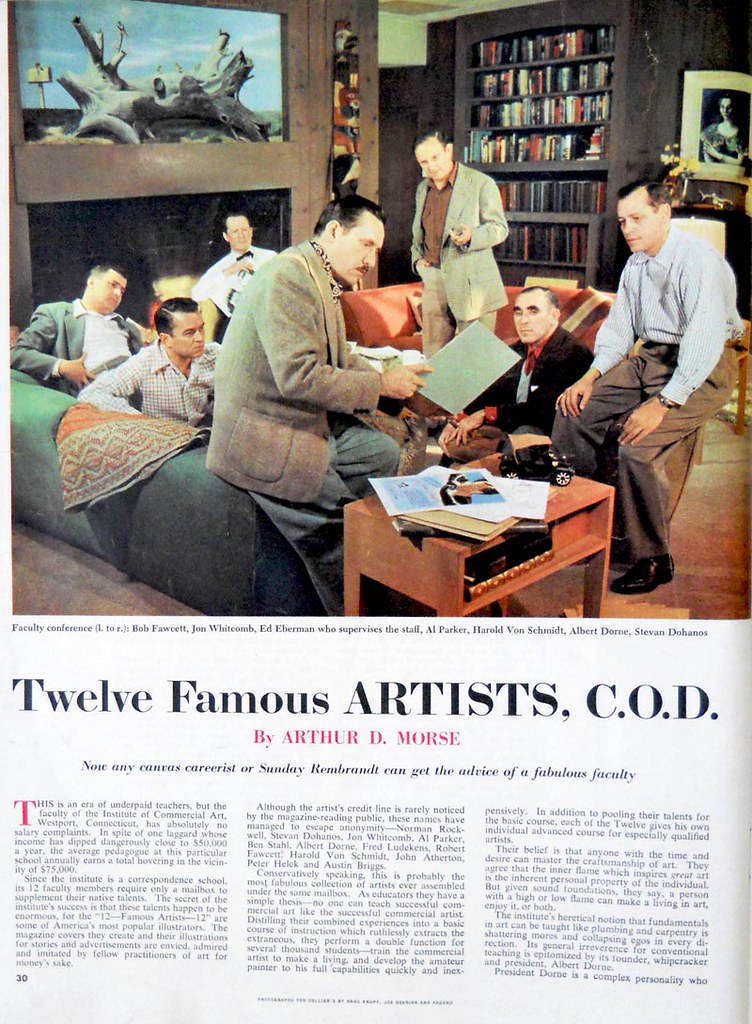
LP: Can you tell me about the beginning of your career?
MC: I started out with Bielefeld Studios in Chicago...
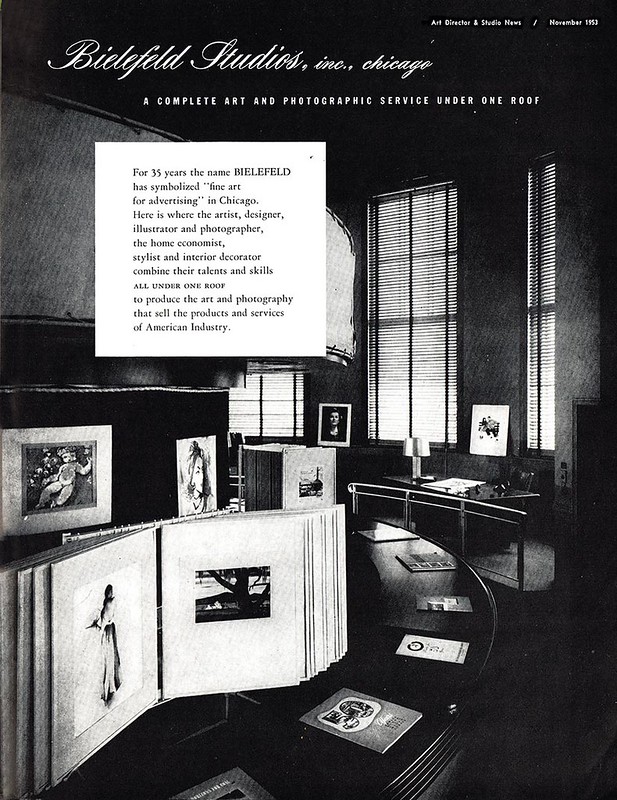
... then with Kling Studios (that was a big studio).

They had Tom Hall and Howie Forsberg - that was huge at that time in Chicago. Do those names ring a bell? Tom Hall?

LP: Oh, absolutely. I've talked to Tom Hall's daughter as a matter of fact. So were you working in Chicago or was that long-distance work?
MC: I was born in Chicago. That's where I started. That's where I worked for my first 'name' studio and where my husband, who was also an illustrator and had been a Marine, worked for Gil Elvgren.
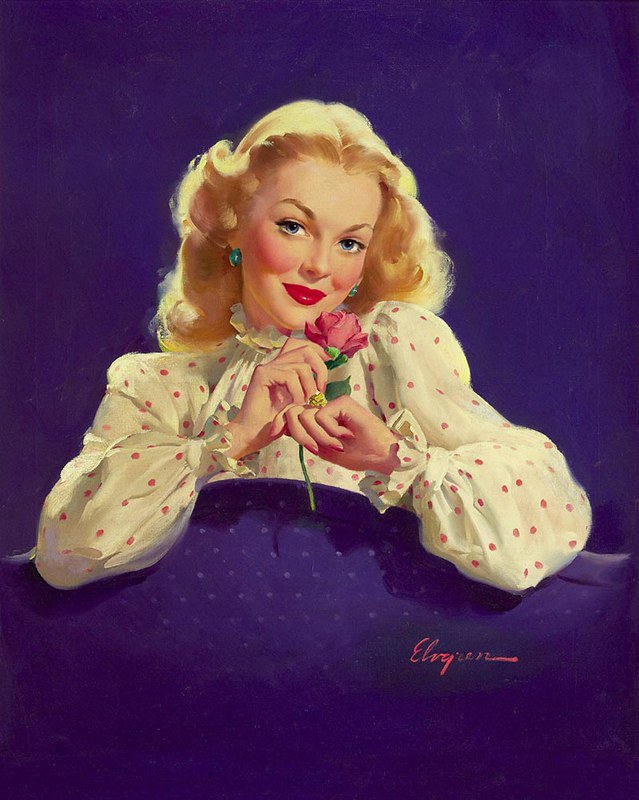
LP: I'm sorry, did you just say your husband worked for Gil Elvgren?
MC: He was his apprentice, yes. Why?
LP: Marilyn, I don't know if you're aware of this but today Gil Elvgren's originals sell for as much as two or three hundred thousand dollars each.

MC: Oh, we used to be in the studio when he was painting the damn things. You know, they were really beautifully done... what did you say; two or three hundred thousand each?
LP: Yeah.
MC: Oh my god... he was thirty five when Hendrick [Marilyn's husband] and I were twenty. We were just wide-eyed apprentices but...
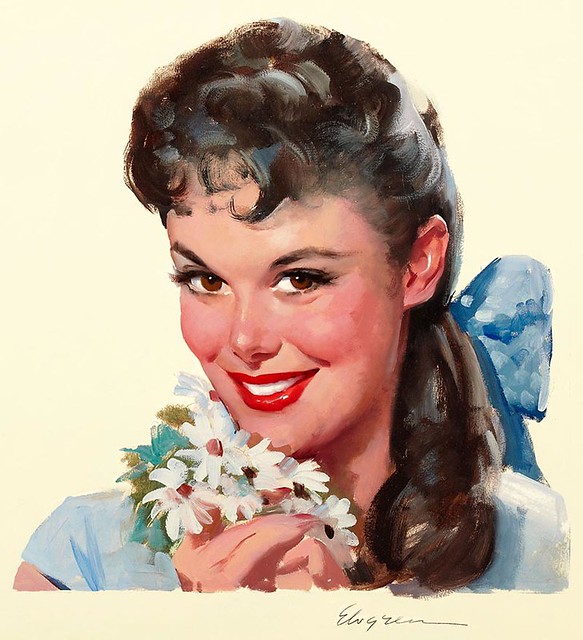
... you know who Dave Garroway was? He was the first one to do the Today Show out of Chicago - he was part of this whole party group we had with Gil and Joyce Ballentyne. She worked with Stevens-Gross with Gil Elvgren.
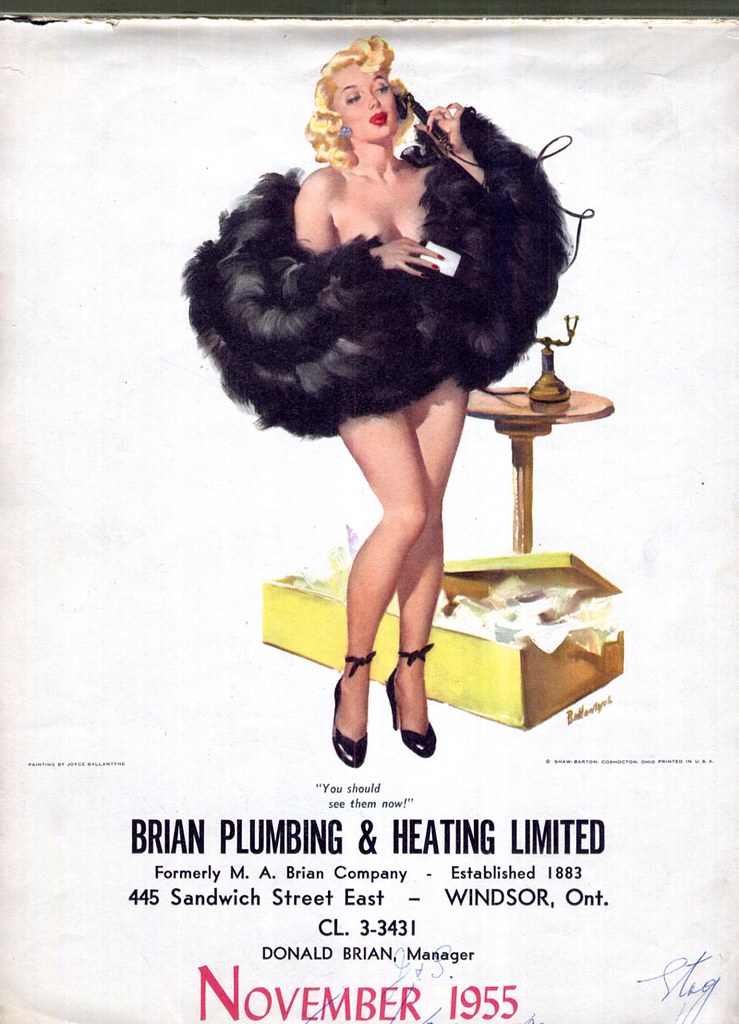
LP: Maybe you could explain something to me... were they all students of Haddon Sundblom? Because I know he had many apprentices and they all have sort of a similar style...
MC: Gil was. Oh yes, Haddon Sundblom invented the Coca-Cola Santa Claus. He made Santa Claus the big, jolly, chubby guy we all know today.
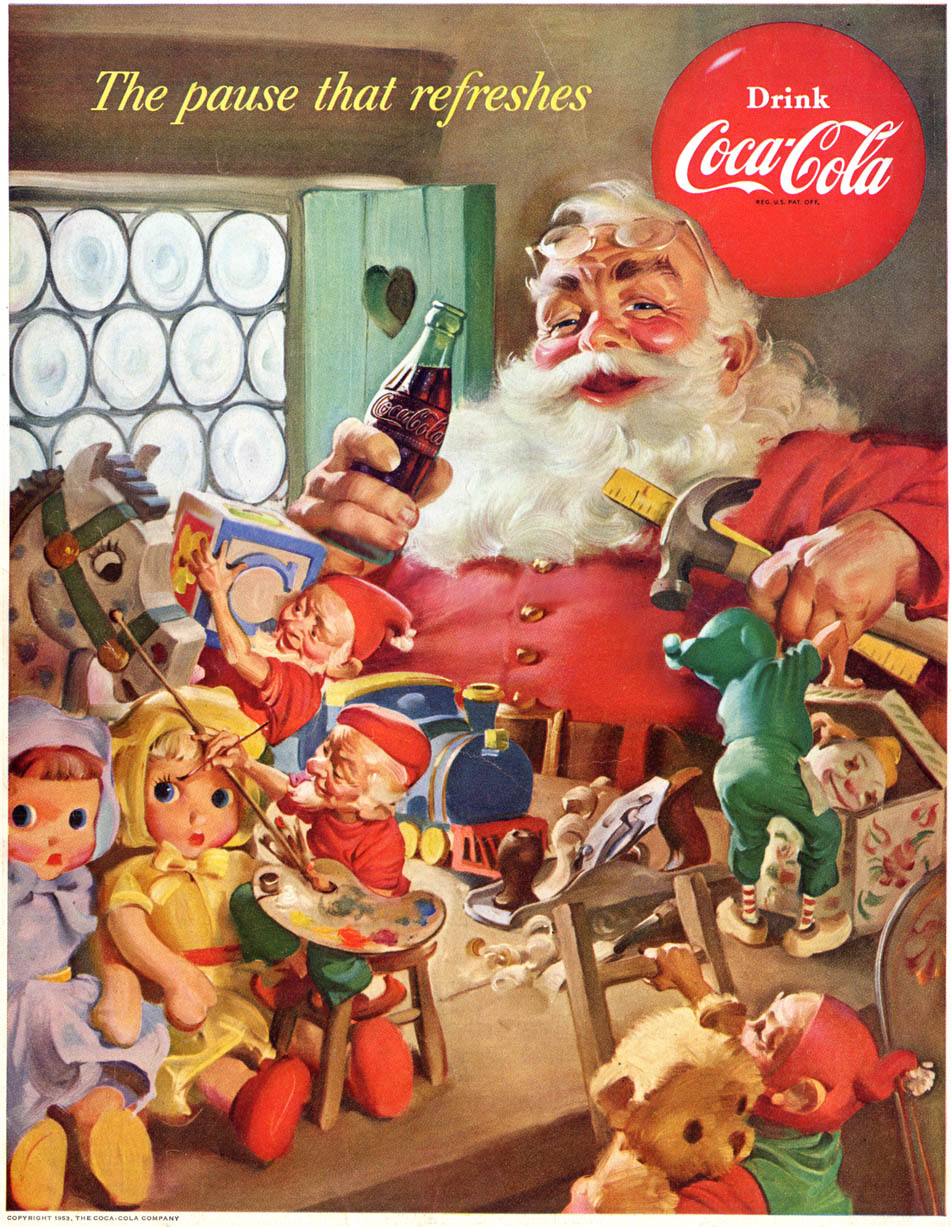
MC: His son jumped off the Brooklyn Bridge or one of the bridges, I think. He was not too great a father.
LP: Oh my gosh!
MC: But... that's happened to a lot of great people. Y'know, it's making me sick. I don't want to think of those years anymore. They were the hardest years of my life.
Continued tomorrow
It's good to hear this perspective. I'm sure there were just as many struggles being an artist as there are today. Thanks for posting this.
ReplyDeleteLeif, I have come to learn that recollections are always like Rashomon. Everyone remembers things differently. But having spent a fair amount of time looking through the files and history of the Famous Artists School, I can tell you that Marilyn's recollections don't comport with the written record. The FAS was not invented by guys who "got smashed at a party,"it was developed over a long time within the Society of Illustrators as a carefully considered way to create operating funds for the Society while at the same time responding to multiple requests for advice from across the country. Later, lawyers advised that the Society could not operate the school for tax reasons. Rather than let all their planning go to waste, Al Dorne modified the concept and developed the FAS as a private corporation.
ReplyDeleteFurthermore, while the School did initially promised students that they could work with the teacher of their choice, the FAS learned within the first year that everybody wanted Rockwell and nobody wanted the other 11 "famous artists," so they publicly announced a change, that students would be rotated through the faculty. As the school grew, the faculty "taught the teachers." I think the record is pretty clear that these changes had nothing to do with Marilyn's theory that "they didn't want you to develop a relationship with a real artist because that would circumvent the slobs that were running the thing."
I have personally seen correspondence from Dorne exhorting the 12 famous artists to be sure to show up at the school to lecture to the faculty and give them concrete advice on the work of students, as well as to show up at receptions and to speak while on the road. Dorne said that this personal touch meant the world, both to the faculty and to the correspondence students. So Marilyn's claim that "they invested in it and that was that" doesn't hold up either. She sounds like one angry lady, and I look forward to hearing the rest of what she has to say, but she apparently wasn't willing to do her homework.
There were plenty of problems with the FAS, particularly after Dorne died, because he was the glue that held the place together and made sure that everybody did their best. But I don't see how Marilyn could look at the FAS training materials and conclude that the FAS was anything other than a sincere effort at the start; those materials are still terrific, and hold up even today.
Of course, David; I hope my preamble makes it clear that I'm not presenting Marilyn Conover's opinion on this as "writ in stone" fact. I'm simply sharing one artist's personal perspective on that period. I've written very glowingly about the FAS over the years and have dipped into it's lessons often when preparing my own teaching materials - they are second to none (and equal to Loomis' in my opinion). But I didn't want to edit or censor Marilyn just because I happen to disagree with her take on the school. There will be another interview with a former teacher from the FAS in a month or two which I think will provide a refreshing counterpoint to this week's presentation. Stay tuned!
DeleteLeif, I understand perfectly and did not mean to ascribe Marilyn's views to you. It just seemed to me that since there is a documentary record that can easily resolve any dispute on these facts, this comment section would be a good space to suggest that people consult it, to satisfy themselves.
DeleteIt seems to me that Marilyn may have spent a whole lot of time being angry unnecessarily
"Thumbs up" to that, David. ;^)
DeleteI'm enjoying this one. For some reason I tend to be attracted to 'angry women', so Marilyn's opinion doesn't phase me. I appreciate the way the images you have selected (in Part 2) compliment the text. Looking forward to part 3.
ReplyDeleteThank you Steve!
DeleteNeglecting her children and losing her marriage obviously broke the woman's heart. What she was saying is that behind the pretty pictures, there were a lot of neglected children and wives who ran around like cheap hired help.
ReplyDeleteI read a blog where an art director who was dying of cancer was trying to explain to some younger art directors that it wasn't worth it, but they couldn't hear him. They went on bragging about how much Chinese food they were eating and how many nights of sleep they were loosing as if such were a measure of how tough and real they were and how exciting their lives were.
Defending The Famous Artist's School is well and good, but Marilyn's larger message is a real one, the human cost was severe and at least to her it wasn't worth losing one's soul over.
I mean, at least for her, it wasn't worth neglecting and losing those she loved.
ReplyDeleteThanks for commenting, Sean; I'm pleased readers like you are sensitive enough to appreciate the more complex realities beneath the surface of Marilyn's story. Hope you return to read the remaining posts to come!
DeleteThank you Leif, I will. This blog is terrific.
ReplyDeleteBest Coworking space in Nerhu Place Well equipied office space in Delhi
ReplyDeleteoffice space in Night Shift
ReplyDeleteWe offer the best facilities that help start-ups to grow faster and achieve new heights of success.Coworking Space Near Me
shared office space in Delhi
ReplyDeletejudi deposit pulsa
mpo99
Coworking space in South delhi
ReplyDeleteCoworking space in Nehru place
Suggest good information in this message, click here.
ReplyDeleteaagautoglass.com
yourrealestatecentre.com
google 1556
ReplyDeletegoogle 1557
google 1558
google 1559
google 1560